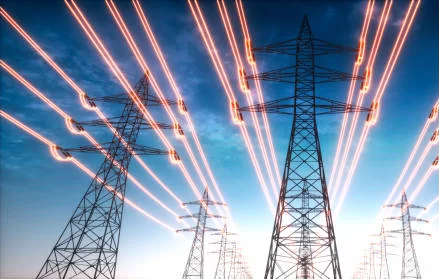BESS Grid: Small Science, Big Impact
In today’s energy sector, the BESS (Battery Energy Storage System) grid is rapidly emerging as a rising star. With its unique advantages and immense potential, it is bringing significant changes to our lives. Today, let’s delve into the BESS grid and explore the big impact behind this small science.

The BESS grid is a system that uses battery technology to store electrical energy. It can store excess power when supply is abundant and release it during peak demand or shortages, ensuring stable power supply and optimized distribution.
Typically, a BESS grid consists of battery packs, power electronic converters, and a control system. The battery pack is the core component for storing energy, with common battery types including lithium-ion, lead-acid, and flow batteries. Power electronic converters are responsible for converting the direct current (DC) stored in the battery into alternating current (AC) to connect with the grid. The control system monitors and manages the entire system to ensure safe, stable, and efficient operation.
2. Key Features of the BESS Grids
Flexible Power Supply and Demand Adjustment
The BESS grid can quickly respond to changes in power demand, allowing real-time adjustments. For example, during peak summer demand, the BESS grid can release stored energy to meet user needs and prevent grid overload. During nighttime low-demand periods, it can store excess energy, improving energy utilization efficiency.
For intermittent and unstable renewable energy sources like solar and wind, the BESS grid acts as a buffer. When renewable generation is abundant, the BESS grid stores excess energy, and when generation is insufficient, it releases stored energy to ensure a stable power supply.
Enhancing Grid Reliability
The BESS grid can serve as a backup power source, activating quickly during grid failures or outages to provide continuous power. This is crucial for facilities that require high reliability, such as hospitals, telecommunications, and financial institutions.
It can also optimize power flow within the grid, reducing losses and failure rates, thereby enhancing overall grid reliability.
Promoting Renewable Energy Development
As global demand for renewable energy continues to grow, the BESS grid has become a vital support for advancing renewables. It helps address the intermittency and instability of renewable energy, increasing integration rates and fostering sustainable energy development.
For instance, in solar photovoltaic systems, the BESS grid can store excess solar energy during the day and release it at night or on cloudy days, ensuring continuous power supply for users.
Reducing Energy Costs
By optimizing the balance between power supply and demand, the BESS grid can lower peak loads on the grid and reduce reliance on traditional generation units, thereby cutting energy costs.
Additionally, the BESS grid can participate in ancillary services in the power market, such as peak shaving and frequency regulation, generating extra income and further reducing energy costs.
3. Applications of the BESS Grid
Distributed Energy Systems
In distributed energy systems, the BESS grid can integrate with renewable energy sources like solar and wind to achieve energy self-sufficiency. In remote areas or islands, it can provide reliable power supply to local residents.
It can also enhance microgrid stability and reliability, ensuring efficient use of distributed energy.
Peak Shaving for Power Systems
The BESS grid can charge and discharge during peak and off-peak periods to balance the power system. This improves grid efficiency and reduces user electricity costs.
For example, in some regions, power companies use the BESS grid to balance daytime and nighttime power demand, enhancing grid stability and reliability.
Electric Vehicle Charging Facilities
The BESS grid can be integrated with electric vehicle charging stations to provide fast charging services. It can also use electric vehicle batteries as storage devices, enabling bidirectional energy flow and improving energy efficiency.
In some cities, power companies install BESS grids in parking lots or gas stations to charge electric vehicles while also using their batteries to release energy during peak demand, easing grid pressure.
4. Future Prospects for the BESS Grids
With ongoing technological advancements and decreasing costs, the future of the BESS grid looks promising. In the future, it will play an increasingly important role in the following areas:
Integration with Smart Grids
The BESS grid can be integrated with smart grids for intelligent power management and optimized distribution. For example, through smart sensors and control systems, it can monitor real-time power demand and supply, automatically adjusting charging and discharging strategies to improve energy utilization efficiency.
It can also integrate with smart homes, smart transportation, and other sectors for efficient energy use and sustainable development.
Large-Scale Deployment
As battery technology advances and costs decrease, the scale of BESS grids will expand, enabling large-scale applications. In large cities or industrial parks, the BESS grid can serve as a primary energy storage system, ensuring stable local power supply.
It can also integrate with renewable energy plants, enabling large-scale energy storage and generation, contributing to global energy transitions.
Innovative Business Models
The development of the BESS grid will introduce new business models and market opportunities. Power companies can invest in building BESS grids, offering storage and ancillary services for additional revenue. Users can participate in demand response programs, using the BESS grid to save energy and reduce costs.
In conclusion, as a new energy storage technology, the BESS grid offers numerous advantages, including flexible power supply management, enhanced grid reliability, support for renewable energy development, and reduced energy costs. With ongoing technological progress and expanding applications, the BESS grid will play a more significant role in the energy sector’s future. Let’s look forward to a cleaner, more efficient, and reliable energy future powered by the BESS grid.
